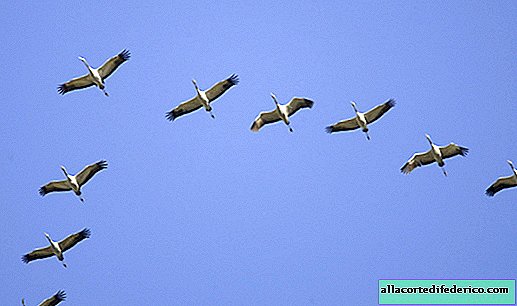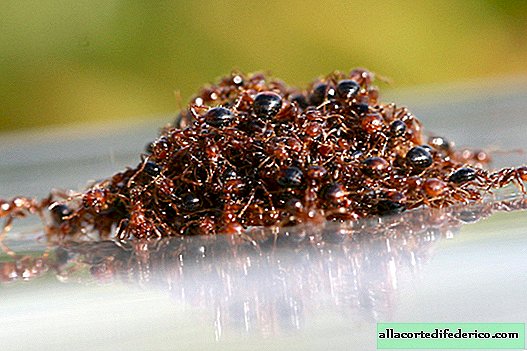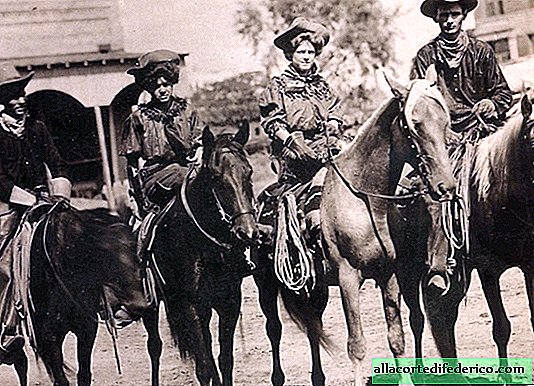Why do large birds fly in a wedge
Summer, sadly, is drawing to a close, which means that migratory birds are already starting to gather south, especially those that nest in the polar latitudes. Overcoming thousands of kilometers, birds make difficult flights twice a year, obeying the law of nature, which is not one thousand years old. Birds fly in large flocks, often preferring to move in the form of a wedge. Why do they choose this way?

Many probably saw in the autumn a duck school or a group of cranes flying in a wedge. It is interesting that these birds line up in this form, even if there are only 4-5 of them and they have not yet joined in a common group. Large birds such as geese, ducks, cranes, herons, pelicans and others prefer this method of flight, while small birds most often fly in chaotic groups. Well, large birds of prey do not need company and prefer to travel alone.

As it turned out, some birds move in a wedge to save energy. Ahead of the wedge flies the most powerful and hardy bird - the leader of the flock. When a leader flying at the head of a wedge flaps his wing, turbulences and ascending flows form in the air, which greatly facilitate the flight of birds flying behind him. The same can be said of all other birds that follow the chain: each subsequent bird takes advantage of the flapping wings of a member of the flock flying in front of it. According to the calculations, this method of construction during long-haul flights can save up to 25% of energy.

It is noticed that the oldest and weakest birds always fly at the end of the flock, where air resistance is minimal. In addition, it was possible to find out that the leader does not always fly ahead of everyone. Sooner or later, the leading male gets tired, and then he goes to the end of the flock to regain his strength, and his place is alternately occupied by birds flying after him and comparable with him in strength and endurance. Thus, it turns out that large species of birds are well versed in aerodynamics, at least in that part that relates to energy savings during long-haul flights.


















